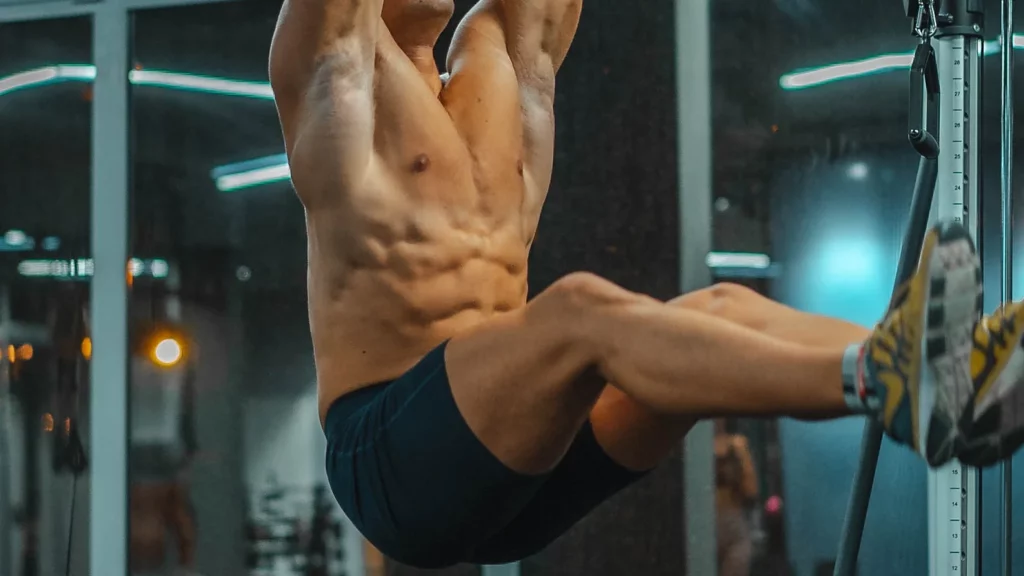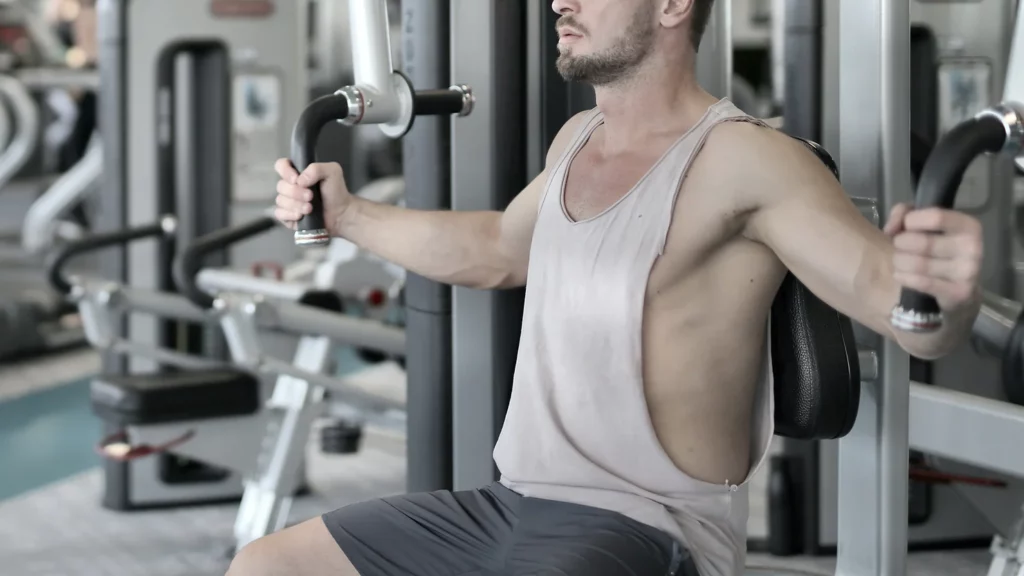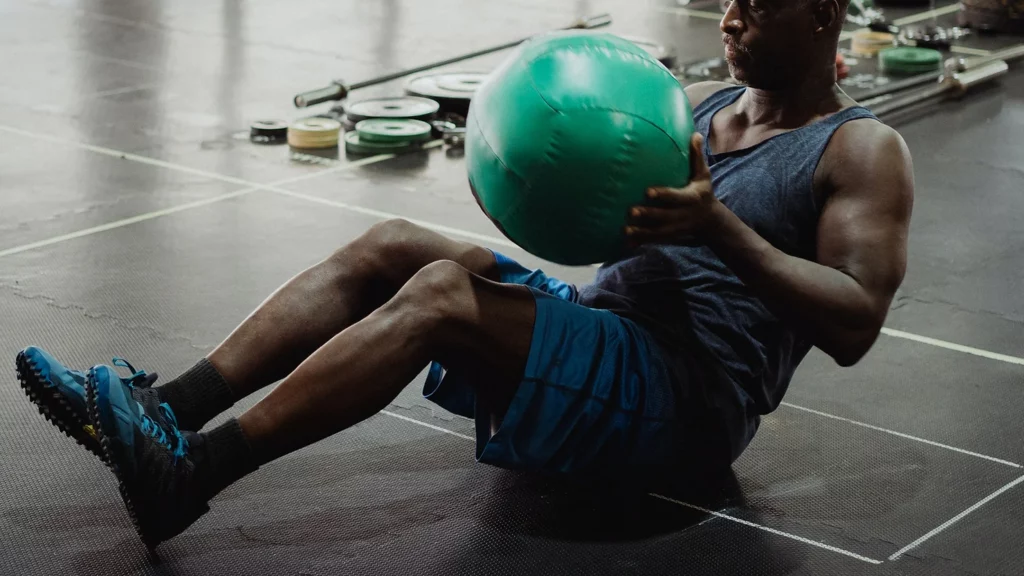What muscles does the leg raise exercise work?
The leg raise exercise primarily works the abdominal muscles. The rectus abdominis, which is the “six-pack” muscle, is activated during this movement. The obliques, which are the muscles on the sides of the abdomen, are also engaged. The leg raise exercise also works the hip flexors, which are a group of muscles that help you lift your legs.
The rectus abdominis is primarily engaged during the concentric, or lifting, phase of the leg raise. The obliques are engaged to a greater extent during the eccentric, or lowering, phase. Lastly, the hip flexors are engaged throughout the entire movement.
The advantage of this movement over others is that it can be done with no equipment and relatively little space. This makes it a great exercise for home workouts. Additionally, the leg raise can be made more challenging by adding weight or increasing the range of motion.
How to perform the leg raise?
Before starting the exercise, there are a few things to keep in mind. First, keep the abs pulled in tight throughout the entire movement. This will help to target the abdominal muscles and avoid straining the lower back. Second, tuck the chin to ensure that the neck is aligned with the spine. Finally, exhale as you raise your legs and inhale as you lower them back down.
Here is a step-by-step guide on how to perform the leg raise:
-
Lie flat on your back on a mat with your legs extended in front of you.
-
Place your hand’s palms down beside you or under your glutes for support.
-
Exhale and raise your legs until they are perpendicular to the floor. Keep the abs pulled in tight throughout the movement.
-
Slowly lower your legs back to the starting position, inhaling as you go.
-
Repeat for the desired number of reps.
Common Mistakes
One of the most common mistakes people make when doing leg raises is arching the lower back. This puts unnecessary strain on the spine and can lead to injury. Remember to keep the back flat on the mat and the abs pulled in tight throughout the movement. Another common mistake is swinging the legs up using momentum. This takes away from the work that the abdominal muscles are doing. Instead, raise the legs slowly and with control.
Finally, people often hold their breath during this exercise. This can lead to dizziness and nausea. Remember to breathe throughout the leg raise, exhaling as you raise your legs and inhaling as you lower them back down.
Variations of the Leg Raise
There are many ways to make the leg raise more challenging.
Variation #1: Single-Leg Leg Raise
This variation is more challenging than the basic leg raise. It requires greater stability and works the abdominal muscles to a greater extent. To perform the single-leg leg raise, follow the same instructions as above but raise one leg at a time.
Variation #2: Lying Leg Raise with Weights
This variation is great for adding resistance and increasing the intensity of the leg raise. To perform this variation, lie flat on your back on a mat with your legs extended in front of you. Place a weight between your feet and exhale as you raise your legs until they are perpendicular to the floor. Slowly lower your legs back to the starting position, inhaling as you go. Repeat for the desired number of reps.
Variation #3: Leg Raise with a Twist
This variation targets the oblique muscles to a greater extent. To perform the leg raise with a twist, follow the same instructions as above but twist your torso to the side as you raise your legs. Return to the starting position and repeat on the other side.
Variation #4: Hanging Leg Raise
This is one of the most challenging variations of the leg raise. It requires great abdominal strength and stability. To perform the hanging leg raise, grab a pull-up bar with an overhand grip. Hang from the bar with your legs extended and your knees slightly bent. Exhale as you raise your legs until they are perpendicular to the floor. Slowly lower your legs back to the starting position, inhaling as you go. Repeat for the desired number of reps.
Variation #5: Hanging Knee Raise
This variation is a great alternative for those who cannot do a full hanging leg raise. To perform the hanging knee raise, grab a pull-up bar with an overhand grip. Hang from the bar with your legs extended and your knees bent. Exhale as you raise your knees toward your chest. Slowly lower them back to the starting position, inhaling as you go. Repeat for the desired number of reps.
Variation #6: Leg Raise Machine
This variation is a great option for those who want to add resistance but do not have access to weights. To use the leg raise machine, sit on the machine with your back against the pad and your feet under the pads. Place your hands on the handles for support. Exhale as you raise your legs until they are perpendicular to the floor. Slowly lower your legs back to the starting position, inhaling as you go. Repeat for the desired number of reps.
Summary
The leg raise is a great exercise for targeting the abdominal muscles. There are many variations of the leg raise, each with its own benefits. Remember to keep good form throughout the exercise to avoid injury. Add resistance by using weights or a leg raise machine to make the exercise more challenging. Try different variations of the leg raise to target different muscle groups.
Are you looking to get fit? Look no further! Our fitness programs are designed to help you build a strong and aesthetic physique. We also provide easy-to-follow routines that will fit any schedule. With our fitness programs, you'll have the tools you need to build muscle and achieve your fitness goals. Click the link below to get started!



